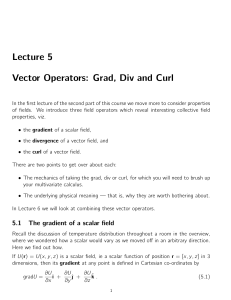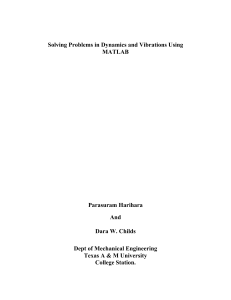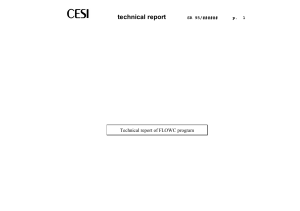000056145.pdf (1.091Mb)
publicité
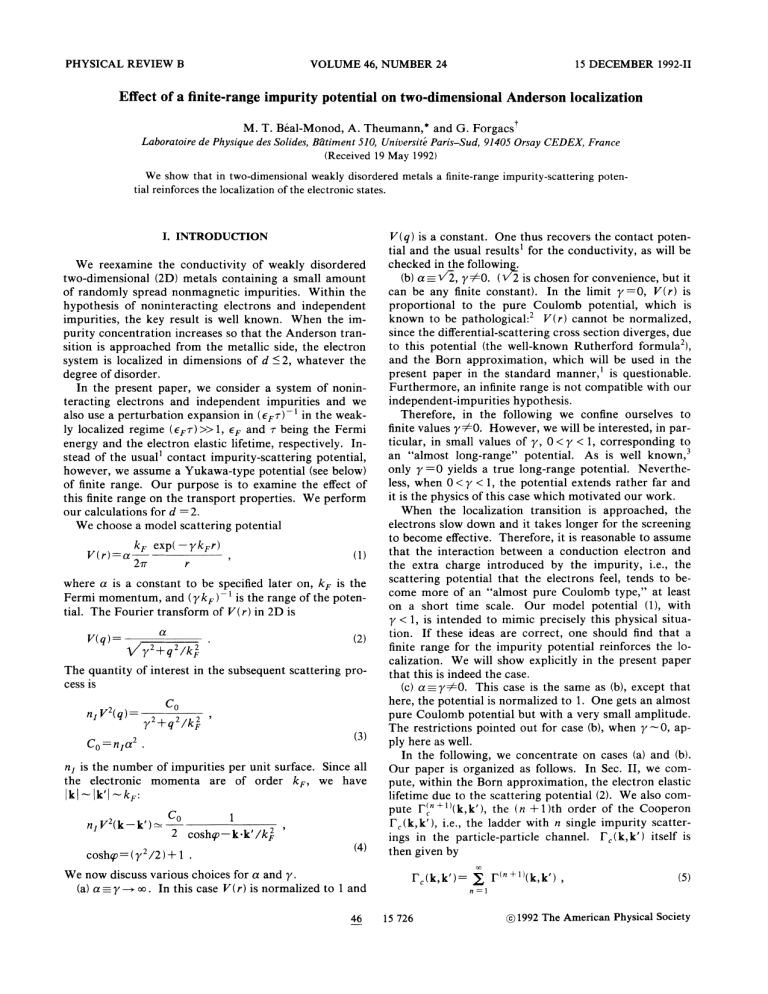
PHYSICAL REVIEW B
VOLUME 46, NUMBER 24
15 DECEMBER 1992-11
Effect of a finite-range impurity potential on two-dimensional Anderson localization
M. T. Béal-Monod, A. Theumann,* and G. Forgacst
Laboratoire de Physique des Solides, Batiment 510, Université Paris-Sud, 91405 Orsay CEDEX, France
(Received 19 May 1992)
We show that in two-dimensional weakly disordered metais a finite-range impurity-scattering potential reinforces the localization of the electronic states.
I. INTRODUCfiON
We reexamine the conductivity of weakly disordered
two-dimensional (2D) metais containing a small amount
of randomly spread nonmagnetic impurities. Within the
hypothesis of noninteracting electrons and independent
impurities, the key result is well known. When the impurity concentration increases so that the Anderson transition is approached from the metallic side, the electron
system is localized in dimensions of d :S 2, whatever the
degree of disorder.
In the present paper, we consider a system of noninteracting electrons and independent impurities and we
also use a perturbation expansion in (EpT)- 1 in the weakly localized regime (E pT) >> 1, E F and T being the Fermi
energy and the electron elastic lifetime, respectively. Instead of the usual 1 contact impurity-scattering potential,
however, we assume a Yukawa-type potential (see below)
of finite range. Our purpose is to examine the effect of
this finite range on the transport properties. W e perform
our calculations for d = 2.
We choose a model scattering potential
kp exp( -rkpr)
V(r)=a--'--------=--
21T
r
(1)
where a is a constant to be specified later on, kp is the
Fermi momentum, and (rkp)- 1 is the range ofthe potential. The Fourier transform of V( r) in 2D is
V(q)=
(2)
a
Vr2+q21kJ,
The quantity of interest in the subsequent scattering process is
2
-
ni V (q)-
Co
2
2
2
r +q lkp
'
(3)
Co=nia2.
n1 is the number of impurities per unit surface. Since all
the e1ectronic momenta are of order kp, we have
lkl-lk'l-kp:
Co
2 coshq:>- k·k' !k],
n 1 V 2 (k-k')=-----'-----,
coshtp=( r 2 /2)+ 1 .
(4)
We now discuss various choices for a and r.
(a) a r ~ oo . In this case V (r) is normalized to 1 and
=
46
V(q) is a constant. One thus recovers the contact potential and the usual results 1 for the conductivity, as will be
checked in the followin~
(b) a==:V2, r=t=O. (V2 is chosen for convenience, but it
can be any finite constant). In the limit r =O, V(r) is
proportional to the pure Coulomb potential, which is
known to be pathological: 2 V (r) cannot be normalized,
since the differential-scattering cross section diverges, due
to this potential (the well-known Rutherford formula 2 ),
and the Bom approximation, which will be used in the
present paper in the standard manner, 1 is questionable.
Furthermore, an infinite range is not compatible with our
independent-impurities hypothesis.
Therefore, in the following we confine ourselves to
finite values r=t=O. However, we will be interested, in particular' in small values of r' o < r < 1' corresponding to
an "almost long-range" potential. As is well known, 3
only r =O yields a true long-range potential. Nevertheless, when o < r < 1' the potential extends rather far and
it is the physics of this case which motivated our work.
When the localization transition is approached, the
electrons slow down and it takes longer for the screening
to become effective. Therefore, it is reasonable to assume
that the interaction between a conduction electron and
the extra charge introduced by the impurity, i.e., the
scattering potential that the electrons feel, tends to become more of an "almost pure Coulomb type," at least
on a short time scale. Our model potential (1 ), with
r < 1' is intended to mimic precisely this physical situation. If these ideas are correct, one should find that a
finite range for the impurity potential reinforces the localization. We will show explicitly in the present paper
that this is indeed the case.
(c) a= r=t!=O. This case is the same as (b), except that
here, the potential is normalized to 1. One gets an almost
pure Coulomb potential but with a very small amplitude.
The restrictions pointed out for case (b), when r -o, apply here as well.
In the following, we concentrate on cases (a) and (b).
Our paper is organized as follows. In Sec. 11, we compute, within the Born approximation, the electron elastic
lifetime due to the scattering potential (2). We also compute r~n+t>(k,k'), the (n +Uth arder of the Cooperon
rc(k,k'), i.e., the ladder with n single impurity scatterings in the particle-particle channel. r c ( k, k') itself is
then given by
rc(k,k')=
l:
r<n+l)(k,k')'
(5)
n =1
15 726
© 1992 The American Physica1 Society
46
EFFECf OF A FINITE-RANGE IMPURITY POTENTIAL ON ...
15 727
with the appropriate fermionic Matsubara frequencies
implicitly included. In Sec. 111, we collect ali the diagrams contributing to the electrical conductivity u, in the
weakly localized regime, and we discuss the resulting formula for u. In Sec. IV, we conclude and correlate our
work with previous works dealing with what is usually
called "correlated disorder."
11. CALCULATION OF THE COOPERON r
c
A. The relaxation time T
In 2D the elastic scattering relaxation time T is given,
in the Born approximation, by the usua14 diagram of Fig.
1. Using (3) and (4),
_!_=n
T
J21Td(J'
1
V2(k-k')=
o 27T
Co
(n + llth order of the Cooperon
given by formula (12). The upper and
lower straight lines are the two electron lines renormalized by
impurity scattering according to Fig. l. The verticallines with
crosses denote impurity scattering. Q is the overall momentum
of the Cooperon. w. is the externai frequency coming into and
going out of the conductivity diagrams in Fig. 3, which will
eventually be taken in the limit Cüv--+0; ID. +voiDn are the Matsubara frequencies of the two electron lines and the various k's
and ( Q- k )'s, their respective momenta.
FIG.
2.
The
r~n+tl(k,k';IDn+v•IDnl
(6)
2 sinhq:>
(here (J' is the angle between k and k') and lkl = lk'l =kp.
Retaining only the diagram of Fig. I for the electron
self-energy correction preserves the W ard identity 5 that
guarantees the conservation of the total number of partieles.
For the choices of a mentioned in the Introduction, we
obtain the following.
(a) ,.- 1=n 1 [coshq:>-1]/sinhq:>-n1 , when q:>-oo. One
recovers the usual formula for the contact scattering potential.
(b) r- 1=n1 /sinhq:>. In the limit q:>-0, ,.-! diverges.
This last result corresponds to the Rutherford formula
mentioned in the Introduction for a pure Coulomb potential.
B. The calculation of r~n +I)
We now compute the ( n + 1 )th order of the Cooperon,
r~"+ 0 shown in Fig. 2. We can write it as (using p for k,.
in the figure)
- )
r (cli +l)(k ' k' ' Q·,llJn +v,lt)n
G ( p, ro,. ) is the one-particle Green's function for momentum p and Matsubara frequency ro,.. It contains the elastic relaxation time r due to impurity scattering through
ro,.=(j)n+(2r)- 1sgn{J),., with (j),=21rT (n+fl, with T
being the temperature. ris given by (6). In atomic units
(a.u.), G is given by
G(p,ron>=Uro,.-sp>-1'
(8)
sp=<p 2 -k}l12.
n1 V2(Ip-k'll is given by
as
2
'I
_Co
(3),
with q:=lp-k'l, or by (4)
1
n1 V <lp-k ) -2((J
e)
h
cos q:>-cos k•- P
,
(9)
where (Jk,((Jp) is the angle between k'(p) and the reference axis. Usually, for a contact potential [case (a) in the
Introduction], n1 V2(Ip-k'll reduces to a constant, n1 .
Then the right-hand side of (7) is independent of k' and
sois the left-hand side. Since r~"+ 1>(k,k') is independent
of k', r~"J(k,p) is independent of p and can be pulled out
from the integral, which reduces to the integral over p of
the product of the two Green's functions. Then one recovers the geometric series 1 for r c leading to the usual
diffusive pole ({J)v + D Ik- k' 12)-I, with D the diffusion
constant given by D =k}T/2 in a.u .. In the general case,
however, when V 2 ( lp-k'l) depends explicitly on the angles (JP and (Jk, the right-hand side of (7) is not separable.
Therefore, before computing rc, we must study r~n+U.
(Note that n starts at n =I because the n =O contribution is already taken into account in the diffuson of the
Drude term of the conductivity. This will become explicit in Sec. 111). Q is the momentum ofthe Cooperon contributing to the diffusive pole when IQI-o or, more precisely, when kpQr< 1 (and {J)vr< 1 ). In the following, we
expand the Green's function G(Q-p) in (7) as follows:
G(Q-p,ro,. >~G(p,ro,. )-p·QG 2(p,êõ 11 )
FIG. l. The usual diagram (Ref. 4) for computing the lifetime r [formula (6)]. The straight line is the electron line; the
rounded line with a cross denotes the impurity scattering.
+(p·Q)2G3(p,êõn )+ ...
Using (10), we get
(10)
15 728
M. T. BÉAL-MONOD, A. THEUMANN, AND G. FORGACS
46
(11)
We then find for r~n +n
r~n + 11 (k,k',Q;IDn +ji)n)
(!)
v
1
+1"
X···-----------------------------coshcp- cos(9 n -en -! ) coshcp- cos(9'- en )
X { 1-ikFQT
-k}Q 2 T 2
;~1 cos(eQ -e;)
;,r:,
n
I
n
cos(9Q -e; )cos(eQ -ej )-k}.Q 2 T 2 i~I
cos 2(eQ -e;)
J.
i<j
(12)
e;. e, and e• stand for ek.•I ek, and
in Appendix A.1 with the result
ek, respectively.
- )1 [ 7"-1
r (n+1)(k
c
' k' ' Q·,ron +v,ú>n
-r wv + r- 1
X
I[
1-
The integrais are cumbersome but tractable and they are ca1culated
]n---------=-------?)
cosh[ (n + 1 )cp ]-cose'
2
neQ
F
sinh[(n+1)cp]
2
[
n
cosh[(n +t )cp ]-cose'cosh(cp/2)
sinh( cp /2)
-
si~h(np/2)
smh (cp/2)
2
{cosh [ [E_+ 1 )cp ]-cose'cosh
2
[!!..9?_) }
2
I
n +
(ll _ll')]sinh{[(n+1)/2]p]sin(n/2)p
+ l.kF Q1"[ COSuQ
COS uQ u
sinh(cp/2 )
-
kJ.Q2?
4
[ cos2eQS 0 (n )+cos(2eQ- e• )S 1 ( n )+cos(2eQ -2e' )S 2 ( n)]
where we used Eq. (6). In (13) we have assumed the reference axis to be along k, so that
i =0,1,2 are complicated expressions andare given by
S 0 (n)=
S 1(n)=
1
[ sinh[(n +tlcp]sinh(ncp/2)
sinh(np)
2
. h( 12 )
+ . h( ) (e'~'-2)+ne-(n+))<p
sm cp
sm cp
(e'~'-1)
1
(e'~'-1)
2
1
(e'P-1)
,
(13)
The coefficients S; for
l
,
[2cosh[(n +l)cp][1-e-n'P-n(e'P-1)e-(n+ll<p]
-e-n'~'2sinh(ncp)tanh
S 2 (n)=
e=o.
\
[f]
+e-n'P(l-e-n'P)] '
[e'Psi?h~~~)
-coth [!E...](1-e-n'P)+ne-(n+llcpl
sm cp
2
(14)
EFFECI' OF A FINITE-RANGE IMPURITY POTENTIAL ON ...
46
15 729
We notice in Eq. (13) a surprising term linear in Q for arbitrary 8' (it vanishes only for 8'=1r) but this term is, in fact,
irrelevant and it can be neglected, as we show in the following discussion.
Note that we could have simplified more drastically formula (12), taking advantage of the following fact. In the subsequent calculation of the conductivity, we will have to integrate over Q; in particular, we will need J~1rd(JQ/(27r).
Therefore, immediately integrating (12) over dfJQ would amount to replacing the expression in { · · · ] in (12) by
This, in tum, would result in suppressing in (13) the imaginary linear term in Q and the following Q 2 term. The evaluation of Eq. (12) with this last form is given in Appendix A.2.
c.
The calculation of r c
We now compute r c in Eq. (5), together with Eqs. (13) and (14). Performing the sums over n is very difficult, so we
will examine specifically the two cases (a) and (b) of the Introduction.
(a) a=:y-+co
Since n?: 1, and cp- oo, then ncp- oo and the dominant terms in Eq. (13) are
J
n { [ 1-n kjQ2,2]- kjQ2,2
2
2
[ 1-cosfJ'e
n
(e'~'-1)
-'~'-cos(28Q )-2-e_'~'_--1
(e'~'+
1)
which reduces to
(n+l)
, ._
1 [
rc
(k,k,Q,cun+v•CUn)~T
where we indicated by
E
T-I
(16)
-1
CUv +T
the sums ofterms proportional to Q and Q2 that are not multiplied by n. Then,
"' [ 1+1
r~n+l)(k,k',Q;â>n+v•â)n)~{l+E)..!_ ~
T n =I
-
1
1
- -,2 cuv+DQ2 ,T
f1--F
k2Q2,2
__ ]
-1-nl '
r c.
a=V2, arbitrary r
In the general case, we separate in (5)
oo
no
~=~+
n=l
n=l
oo
~
D
l
n
kjT
=-2-
(17)
.--------------------------------------
where E( << 1 ) gives an uninteresting correction to unity
in the numerator and it can be dropped. We thus recover
the usual pole 1 in the diffusive regime for the Cooperon
(b)
2
lUv'T
(18)
n=n 0 +1
n 0 is chosen such that, for a given value of cp (i.e., for a
given value of the potential range),
(19)
W e recall that for reasons explained in the Introduction, we exclude the value r =O, i.e., the value cp=O.
Thus, cp is always finite and the sinh(cp/25) and (e'~'-1)
appearing in the denominators of (13) and (14) are also
finite quantities. Under these conditions, the first sum on
the right-hand side of (18) is a finite sum of finite terms,
which thus cannot yield a diffusive pole for r c; we ignore
it in the following. In the second term of the right-hand
side of (18), we put
n=n 0 +1+n'.
(20)
15 730
M. T. BÉAL-MONOD, A. THEUMANN, AND G. FORGACS
Moreover, since n cp > 1, we can rep1ace the hyperbolic
functions by their expansions for large arguments.
According to the remark made after Eq. (17), we can
drop in (13) the terms in Q 2 that are not multiplied by n
l
n[
Then
rc
for small values of Q. This leaves us with only the first
two Q 2 terms. Then, ncp> 1 and, in the case of 1ater interest, where k' = Q- k ~ - k, (cosO'= -1 ), we get for
(13)
k}Q2-f2
e'P
2
e'~'-1
1-n---
46
(21)
follows straightforwardly as
-=_!!!__
r
sinhcp
Therefore, we find that, as usual, 1 r c has a diffusive
pole (without any constant term in the denominator).
This follows from the Ward identity insuring the conservation of the total number of particles as noted after Eq.
(6).
As will become clear in the following, the term proportional to Q 2 in the denominator of (22) in volves the transport time rtr=re'P /(e'~'-1 ), so that r c may be written in
terms of the "transport diffusion constant" D 1r as
rc~
k}.
a(al=
1
27T r, -r- =n 1 /sinhcp.
(22)
(25)
In Fig. 3, the diffuson r d (square box) is the infinite
impurity-scattering ladder in the particle-hole channel.
Its analytic expression can be obtained from r c with
1
r
2
wv+DtrQ
2
'
(23)
b
k}rtr
Dtr~-2-'
where Dtr is, in general, different from k}r /2.
c
111. CALCULATION OF THE
ELECTRICAL CONDUCTIVITY u
First, we have to collect all the diagrams contributing
to a. Due to the fact that the scattering potential, in
Fourier space, depends on the momentum transfer, many
more diagrams contribute, compared to the case of
contact-scattering potential. W e have examined all the
topologically possible diagrams. We have found that the
only relevant ones, to first order in (Ep-r)- 1, are those
shown in Fig. 3. For the contact-potential case, where
the scattering potential does not depend on the momentum transfer, two only diagrams matter: the ones labeled
(a), yielding the usual' Drude value, and (c), the "multiply crossed" diagram 1 yielding the localization correction. For comparison, we recal1 the result 1 for the contact potential due to diagrams (a) and (c):
a(al+(cl=
~!r-~ In ( k~-r]'
r- 1 =n1
,
(24)
where L is the linear dimension of the system.
Instead, for a= v'2 and y finite, we have to take into
account all the other diagrams of Fig. 3. The algebra is
straightforward; we give some details in Appendix B.
Denoting by a tal• etc., the contribution to a of diagrams
(a), etc., of Fig. 3, we get
d
e
9
FIO. 3. The relevant diagrams in the present problem, for
the conductivity u, to first order in (EFT)- 1: the square box
denotes the diffuson r d [(formula (26)] and the one with diagonais denotes the multiply crossed ladder, i.e., the Cooperon r c
given by formula (5) with (13) and (14). The lines with crosses
are impurity-scattering lines. The other lines are electron lines
renormalized by impurity scattering. By symmetry, there exist
two diagrams of the type (d), two of the type (e), two (h), and
four (fl. Diagrams (d), (b), and (h) involve independent momenta k and k'; instead, diagrams (c), (e), and (g) involve
k' Q- k ::::- - k. Each extra single-impurity line introduces ~
factor ofthe form (4).
=
EFFECf OF A FINITE-RANGE IMPURITY POTENTIAL ON ...
46
Q =0, and with the summation in (5) including the n =O
term. Finally,
oo 1
,
_
r (n+l)
d
(k,k ,Q,wn +v•ldn )- l: n=O T
X
[
T -1
w .. +r
-I
ln
sinh( n + 1 )q;
cosh(n + 1 )q;-cosO'
15 731
with r 1r defined before Eq. (23). Expressed in terms of q;
only, using the explicit expression for r recalled above in
(34), we get
k} e'~'+ 1
aorude = -2- - - -2- •
1TnJ
(36)
(26)
Whenever k' is independent of k, we found it easier to
compute the corresponding conductivity diagrams, involving either the diffuson or the Cooperon, with the
( n + 1 )th-order term, then integrate over k' and finally
sum over n. We thus found
(27)
with a (al given by (25).
The diagrams containing Cooperons yield
Clearly, when the potential range increases (q; decreases),
aorude decreases. On the other hand, the coefficient of
the In in a 10c remains the same as in the case of the contact potential. The effect of quantum localization is nevertheless reinforced through the dependence of r [under
the In in (37)] on the range of the potential. As a consequence, the total conductivity a in (34) decreases.
IV. CONCLUSION
with
1
a(e)=a(c)2--- ,
(29)
e'~'-1
1
(30)
a (gl =a (cl (e'P-1)2
On the other hand,
a
(d)
=-_!_~ J~J dO' (r(n+tl(k,-k)) 1T
~
n
27T
27T
X k F2 T 3
c
"'v-0
cosO'
. hm
sm
coshq; +cosO'
T
(31)
1
a(f)=a(dl2--- ,
(32)
1
a (hl =a (dl (e'~'-1)2
(33)
e'~'-1
Therefore
V1rn 1
q;>2k.
-; =
sinhq; '
(34)
aorude=a(a)+a(b)= k2}r [1+-1- ]
1T
e'~'-1
k}
= 27T Ttr'
(35)
(38)
F
We may still handle small values of q; ifthe impurity density remains weak, according to the above expression
which, in turn, puts a limitation on the possible increase
ofr- 1:
1/2
1
[ ni ]
T
1T
-< ni
a= a Drude +a toe•
The result of the preceding section is consistent with
our initial idea that increasing the range of the impurity
potential reinforces the tendency of the electrons to localize. In order to handle the mathematical complexities in
deriving our result, we had to resort to a number of constraints; the perturbation expansion to first order in
(EFr)-1, the Born approximation, and also the independent impurity hypothesis prevent us from examining the
direct neighborhood of the Anderson transition. If one
estimates, using Ref. 2, the lowest q; value allowed for the
Born approximation to hold, one finds that r can be quite
low ( > 0.4 ). On the other hand, concerning the validity
of our independent-impurity hypothesis, one must note
that the potential range cannot exceed the mean distance
between impurities, denoted by (2r 0 ). With the density
of impurities being n 1 , we have, in 2D, (1Trõ>=n] 1•
Therefore, r - t cannot exceed r 0 1 such that
<rokF)- 1 =2r0 • For small r,q;-r, we must have q;>q;0
with lfJo = r o=
2k .
F
(39)
Despite these constraints, we believe that the present paper shows, at least qualitatively, how a finite-range impurity potential enhances the electronic localization.
Anderson localization with correlated disorder has
been discussed in a number of previous studies. Following the work o f W einrib and Halperin 7 in magnetic systems, Varriale and Theumann 8 considered the case of
M. T. BÉAL-MONOD, A. THEUMANN, AND G. FORGACS
15 732
algebraically decaying corre1ations. This wou1d correspond to writing, instead of Eq. (3), V 2 (q)~qu, for arbitrary a=l=-2. lt is well known that such correlations be1ong to the long-range universa1ity class 3 and a renormalization group calculation performed in Ref. 8 indicated a
new transition for a <O, a1though the singular behavior
of the conductivity was ana1yzed to first order in E= 4- d
and the Cooperon was not calcu1ated. Hikami and
Brézin9 investigated the behavior of the conductivity of a
two-dimensional system in a strong magnetic field. Instead of Eq. (3), they assumed a Gaussian forro for V 2 (q)
corresponding to a potential V(r) regular at the origin.
Depending on the parameter values, they found either a
zero conductivity or recovered the results of the uncorrelated unitary case. John and Stephen 10 reexamined the
Anderson localization in d = 2 +E dimensions within the
non1inear a mode1 with either exponential or power-law
(regular at the origin) correlations. Their resu1ts were
identical with those of the uncorrelated case even for
long-range correlations. However, as the authors
remarked, due to the method of calculation, it is possible
that their mode1 even in the apparently long-range case,
corresponds to a small q expansion in (3) with the forro
V 2 (q)~a +bq 2• This would explain why they recover
the results of the uncorrelated case. Similar results were
obtained in Ref. 11 where, along with a zero-range
impurity-scattering potential, a weak, but finite, interaction between the impurities was assumed. The weak local
ordering of the impurities (due to their mutual interactions) amounted to having again an "effective" V 2(q) of
the forro (a +bq 2 ).
Our present work differs in several ways from the
above-mentioned studies of correlated disorder. Our
model scattering potential, given by (1), is the consequence of physical considerations on the nature of the interaction between electrons and impurities. Since we al1ow the "screening length" proportional to 1 /r to be
large, we have to retain the full expression (3), and no expansion in terms of the momentum transfer q is possible.
The scattering potential, given by (1 ), is singular at the
1 <
1
q;,,q;z,
46
origin, contrary to all the earlier studied cases in 2D. We
have proved that, even under such conditions, the
coefficient of the In in a 10c remains the same as that for
the contact potential. This is consistent with the fact
that for any nonzero value of r (no matter how small it
is) the system belongs to the short-range universality
class. This is true despi te the fact that for small r, no
small-q expansion of (3) is allowed.
In conclusion, then, we have been able to show explicitly that a finite-range scattering potential reinforces the
tendency for localization. This is physically quite reasonable. In the contact-potential case, an electron "feels" an
impurity only when they are both in contact. Instead, for
a finite-range potential, an electron feels the effect of all
the impurities within that range around it. This is
equivalent to the electrons being scattered effectively by
many more impurities. The case of a finite-range impurity potential is then analogous to the case of a contact potential but with a higher concentration of impurities,
which explains the enhanced tendency for localization.
ACKNOWLEDGMENTS
The authors benefited from fruitful discussions with P.
Nozieres and B. Altshuler. Their comments are greatfully acknowledged. One of us (A.T.) wishes to acknowledge the hospitality and partial support of the Université
de Paris-Sud. She was partially supported by the Conselho National de Desenvolvimento Cientifico e Technologico (CNPq). Two of us (M.T.B.M. and G.F.) were
supported by NATO under Grant No. CR 880736. The
Laboratoire de Physique des Solides is a Laboratoire associé au Centre National de la Recherche Scientifique.
APPENDIXA
1. Calculation of Eq. (12) without integrating over 8,
W e will need the following useful expressions computed straightforwardly by residues in the complex plane:
e')=-1 f27T
de
21r o [cosh(q; 1 )-cose][cosh(q;2)-cos(e-e')]
sinh(q; 1 +q; 2)
sinh( q; 1 )sinh( q; 2) cosh( q; 1 + q; 2)- cos( e•)
(AI)
J (
e· e")=-1-f27T
cos(e-e")de
2 q;,,q;z, '
21r o [cosh(q; 1 )-cose][cosh(q; 2)-cos(e-e')]
sinh(q; 2)cose" +sinh(q; 1 )cos( 8' -8")
sinh(q; 1 )sinh(q;2)[ cosh(q; 1 +q; 2) -cos( e•)]
J (
3
e· e")= _1_
q;,,q;z,
'
21r
(A2)
f o27T [cosh(q; )-cose][cosh(q;
cos 2(e- e" )de
)-cos(e-e')]
1
2
1
1
2sinh( q;, )cosh( q;2) cosh(<p, + ipz)- cose
X [sinh(<p 1 +tp 2)+e -op 1sinh(tp 2)cos2e"
+e -op2 sinh(q; 1 )cos(2e" -2e' )+2e -rop 1 +opz)sinh(<p 1 )sinh(<p2)cos(2e" -e')] .
(A3)
EFFECT OF A FINITE-RANGE IMPURITY POTENTIAL ON ...
15 733
Using Eq. (AI) repeatedly, we can deduce the useful expression
f oztrd()l
I([()')=
0
21T
'
1
1
Jz"d()l-t
cosh(q> )-cos( 01 -
()')
--
o
21T
X
cosh(q> )-cos( 01 _ 1 - 01 )
...
1
f 2trd()!
21T cosh(q> )-cos{0
0
1
----------~-----------------2 -() 1 ) cosh(q>) -cos{0 1 )
_ sinh[ (1 + 1 )tp]
1
- [sinh(q>)f+l cosh[(l +l)q>]-cos()'
(A4)
We write Eq. (12) as
r~n+ll(k,k',Q;wn+v•wn)=_!_[ -~~~
7
T
]n[sinhq>j<n+IJ lo(n,()')-ikpQT
Wy
i
1/n,()')
j=!
(AS)
where / 0 (n,O') is given by Eq. (A4) with I =:n and
/.(n,O')=
Joz"d()n
21T
J
1
cosh(q>)-cos(On -()')
(A6)
J .. (n)=
'1
21rd()n
Jo
21T
1
cosh(q>)-cos(()n -()')
(A7)
1
L.(n)= Jztrd()n
'
o
21T
J dO;
cosh(q>) -cos( ()n-O')
21T
cos2(6Q-0;)
cosh(q>)-cos(6;-0;+t)
d().
X-' -------------------------
21T cosh(q>)-cos{0 1 -02 ) cosh(q>)-cos6 1
(A8)
Using Eqs. (A4) and (A2) we obtain for Ii(n) in Eq. (A6)
Ii(n,O')=
f
21T
0
d().
2; cos(Oi -(JQ )10 (n- j,Oi -()')I0 (j -1,()i)
=sinh[(n+l-j)p]sinh[jp]J[' (n+ 1 _.) (}'(}]
[sinh(q>)n+l]
2 ]q>,
1 q>, ' Q
1
sinh(n + 1- j)rp cosOQ +sinh(jrp)cos(()Q -(}')
[sinh(rp) ]n + 1
cosh[(n + l)rp] -cos()'
(A9)
then
i
i=I
li(n,()')= [ . h( 1 w+t
sm
rp
1
[cos6Q+cos(() -()')] sinh(np)sinh[(n +1)/2]p
cosh[(n +Orp]-cos6'
Q
sinh(rp/2)
In the same way, we obtain from Eqs. (AS) and (A3)
(AlO)
15 734
M. T. BÉAL-MONOD, A. THEUMANN, AND G. FORGACS
L,.(n)=
f oz,.-de,.
2 cos (e,. -eQ }/ (n -i,e,. -e')/
2
0
11"
0 (i
46
-1,e,.)
= sinh[(n + 1-i)cp]sinh[icp] J [i ·(n + 1 _i) _8 ,_ 8 ]
3 cp,
[sinh(cp)]n +I
cp, ' Q
1
1
1
[sinh(cp)]n+l 2 cosh[(n +1)cp]-cos8'
X I sinh(n + 1 )cp+e -i'~'sinh[(n + 1- i)cp ]cos28Q
+e -(n + I-n'~'sinh( icp lcos(2eQ- 28' l + 2e -(n + 1 >'~'sinh( icp lsinh[ (n + 1- ilcp Jcos(28Q- e· l 1
The sums over i are tedious but straightforward; then we get the result
i
L-(n)=
i=i '
1
1
1
[sinh(cp)]n+l cosh[(n +llcp]-cos8' 2
X {sinh[(n +1)cp]+
+cos(28 -e')
Q
~ [cos28Q+cos(28Q-28')] [ 8!~:~;::;)
ne-(n+I><p
[ne-(n+O'~'cosh[(n +1)cp]-e-(n+O<psin_h(ncp)
smhcp
1
lcos(2e -8')}.
Q
(A11)
The calculations involving I;/ n) are the most difficult ones. We obtain from Eqs. (A 7) and (A6)
-Jz,.dei
.
,
.
- - I0 (n- J,8i -e )cos(8i -eQ )l;(J -1,ei)
/ji(n)-
o
211"
= sinh[(n+1-j)~]
[sinh(cp)](n+I-;>
Jde
1
cos(ei-eQ)
/.(j- 1 e.)
cosh[(n +1-j)cp]-cos(ei-8') '
' J
(A12)
and, using Eq. (A9), together with Eqs. (A2) and (A3), we get
/ .. (n)=
1'
1
1
1
M ..
[sinh(cp)]n+I cosh[(n +llcp]-cose' sinh(jcp) Jl'
(A13)
with
Mi; =sinh[ (j- i)cp] I cos 2eQsinh[ (n + 1- j)cp] +coseQ(8Q -8' )sinh(jcp) I
+
sinh~icp) 1sinh[(n + l)cp] +e- i'Psinh[(n + 1-j)cp ]cos(2eQ)
+2e -(n + 1 >'~'sinh(jcp )sinh[(n + 1- j)cp ]cos(28Q -e' )+e -(n + 1- i>'Psinh(jcp)cos(2eQ -2e') I
(A14)
Now we use the identity
cos(a )cos({3) =-H cos(a + {3) +cos(a-{3)]
to recast Eq. (A14) in the form
Mii =sinh(jcp Jt(sinh[(n + 1- j +ilcp] +cose'sinh[(j -i)cp]
+cos(2eQ )e -i'~'sinh[ (n + 1- j)cp] +cos(28Q -28' )sinh(icp)e -(n + 1- i>'P
+cos(28Q- e')l2e -(n + 1- i>'Psinh[(n + 1- j)cp ]sinh(icp l+sinh[(j- i)cp] I)
.
(A15)
So the overall factor sinh(jcp) cancels the identical term in the denominator of Eq. (A13) and the sums over i,j in Eq.
(AS) can be easi1y performed.
First we observe that the two first terms in Eq. (A15) depend only on n'= j -i; then we may write
n j=1
n
n
l: l: I sinh[(n + 1-n' )cp] +cose'sinh(n'cp)j = l: l: I sinh[(n + 1- n ')cp] +cose'sinh(n'cp) I
j=J n'=l
n'=1 j=n'+1
n
=
l:
n'=1
(n -n')lsinh[(n +1-n')cp]+cos8'sinh(n'cp)j
(A16)
EFFECT OF A FINITE-RANGE IMPURITY POTENTIAL ON ...
46
15 735
and the sums in Eq. (A16) can be perfonned6 by using
.l: n "sinh( n "tp )=-ª- .l: cosh( n "tp)
and
alp n"
n"
.l: n "cosh(n "tp )=-ª- .l: sinh(n "tp)
.
alp n"
n"
For the rest of the terms in Eq. (A16) one should sum first over i up to j -1, and after, over j from 1 to n. The procedure is standard but tedious, with the result
n
1
j=i
1
.l: .l:Iji=[ SlD
·h( lp )]n+l
j=l i= I
X [ 2
cosh[(n+1)m]-cos0
02
..,.
M~q>/2 ) Icosh[ (n +f )q> ]-cosll'cosh(q>/2) J
[E!E_}}
2
-
sinh(ntp/2 ) {cosh [ [!!.+1 }tp] -cosO'
2sinh 2(tp/2)
2
+
( 20 ) [ 2sinh[(n +1/2)p]sinh(np/2)
1
2(e'~'-1) cos Q
sinh(tp/2)
+
1
2(e'~'-1)
cos(20Q-0')
[-ne-"'~'2cosh[(n +Utp]
(1
+
+
1
2(e'~'-1)
sinh(np) +
-nq:>]
sinh(tp)
ne
cos(20Q-20') [
-e
-n'l')
e'~'-1
(1
-2nq:>)
{2 cosh[(n + l}tp] +e -nq:>J +..:....::....---=-e-----'e'~'+ 1
si~hh((np))
-cot [!E_
2 }(1-e-"'~')+ne-"'~']]·
sm tp
By introducing Eqs. (A4) (A 10), (A 11 ), and (A 17) in to Eq.
(AS) we obtain Eq. (13).
(A17)
One easily verifies that all the terms within a given diagonal of the above triangle are equal, whatever the diagonal.
2. Calculation of Eq. (12) integrated over 82
If we take advantage of the remark made in the text
after Eq. (14) the algebra is simplified. We put
I' .. =f
l,J
... f
d0 1 d0 2
21T 21T
X
X
•••
dO,
21T
Ií,z=Ií,3= · · · =I~-l,n •
I'1,3-I'2,4-
1
coshtp-cos(0 1 -0)
I'l,n - I
· · · -I'
n -2,n •
= Ií,n
(A20)
•
1
'"' ) cos(Oi-01.).
cos h tp-cos ('"''
u -un
(A18)
Therefore,
Then
l:
n
I/,j
~ I/,j=
i,j=i
i<j
i,j=l
i<j
can be written as a triangular table sum
"
~ I/,J = Ií,2 + Ií,3 + Ií,4 + · · · + Ií,n
i,j= I
+I'2,3 +I'2,4 + · · · +I'2,n
i <j
+I3,4 + · · · +I3,n
+I~-l,n
(A19)
n
.l:
(n
-i)In-i,n
(A21)
i=l
One can also note that within the last column, but only in
this one, the terms cancel two by two, except the last one
I~ -l,n, which, using (A20), allows some partial cancellations in other columns, too. However, this does not simplify things much compared to just computing (A21).
I~ -i,n can be written from (A18) with (A4) as follows:
46
M. T. BÉAL-MONOD, A. THEUMANN, AND G. FORGACS
15 736
Then, using (A 1) and (A2) a number of times, one gets
I'
. = sinh[(n -i+l)cp]+sinh(ip)cose'
sinhn+l<p!cosh[(n +l)<p]-cose'j .
(A23)
n-,,n
Then, to perform (A21) we put ( n -i)= n" so that
n
~
i,J=I
1(,1 = .
1
n =I
n+I
smh
.
,
<p(cosh[(n +z)<p]-cose
~
l n"=l
n"(sinh[(n"+l)<p]+sinh[(n -n")tp]cos8'J
(A24)
i<j
The sums in (A24) can be performed using
l:n"sinh(n"tp)=
a~ l:cosh(n"<p)'
l:n "cosh( n "<p) =
a~ }; sinh( n "<p)
.
The remaining sums are known 6 and one gets
.ir= sinhn+l<p(cosh[(n1 +l)<p]-cos8'J [,.;ru,';.,/2) lco•h li• +t ]<> j-co•O'co•hf]
i,j=l '·'
i<j
-
si~h(
Then, using (A4) and (A25) in (12) with the brackets
1-
k}Q 2 72
2
n
~
i,j=l
j
[!!.!E.
] }]
2
(A25)
IT llll
(A26)
n P 12 ) {cosh [ [ _!!_ + 1 ] 'P -cose' cosh
2 smh 2(tp/2)
2
I · · · J replaced by its average over eQ,
k}Q 2 -,2
cosw-e.)-n--'
I
2
i<j
we obtain
=
7- r Wv:;I
I r-C-0-Sh_(_(n_:_+_l_)_<p_)
I
I
[hinh~., /2) co•h IIn + j, )q> ]- cmiJ' oo•h f ]]
;~:~~~~"::i) jcooh li~
"which identifies with formula (13) integrated over eQ.
+I ]<>
]-cooO'cooh
EFFECI' OF A FINITE-RANGE IMPURITY POTENTIAL ON ...
46
15 737
APPENDIX B: CALCULATION OF SOME OF THE CONDUCTIVITY DIAGRAMS IN FIG. 3.
In the following, we calculate the contribution of the diagrams in Fig. 3 to be K(b) · · · for finite wv; then, as usual,
the conductivity formula will be obtained through
. K(iw)-K(O)
u= 1tm
.
, w=iwv.
(i)-+
O
(Bl)
I (.r)
1. Calculation of K<bl
k and k' are the electron momenta on either side of the diffuson r
Matsubara frequencies of the upper (lower) electron lines. Then,
d
given in formula (26); êiJn +v and (êiJn) are the
d k d k'
k·k'
ffr dG(k,IDn+v)G(k,IDn )G(k',IDn+v)G(k',IDn ) 2"'n
( 21T) ( 21T)
2
K(bl = -2T ~
Wv
i
~---;- n=O 7
2
2 -2
]nil f
r- 1
-1 [
wv+r- 1
d()' k} cosO'sinh[(n +1)p]
21T 2
cosh[(n +O<p]
(B2)
which straightforwardly yields
k}r
u(b)=
1
21T e'~'-1
(B3)
'
which is formula (27) in the text.
2. Calculation of K(cl
Here the upper electron line carries momenta k and k' on either side of the Cooperon r
Q- k' and Q- k. Momenta conservation imposes
c·
The lower line carries
k+k'=Q, Q-o
(B4)
(B5)
where r c<k,- k) stands for
rc(k,Q-k,Q;IDn+v•IDn),
from which we deduce
(B6)
which, with (23), yields
T
-t
ni
=--
(B7)
sinh<p '
which is formula (28) is the text.
3. Calculation of the other diagrams involving Cooperons
The other diagrams can be computed the same way. We will thus get, compared with u(c) in (B6),
U(e)
=-_!_f.Q!!Q<
rc (k, -k)
)e
2
1T
1T
which is formula (29) in the text;
2 3 _1__
., =o(kpT
)2
-U(c)2 _1_ ,
Q• v
e'~'-1
e'~'-1
(B8)
M. T. BÉAL-MONOD, A. THEUMANN, AND G. FORGACS
15 738
a(g) =-_!_
1T
I
QdQ
2 3
_1_
21T (rc(k, k)) 9Q,w• =o(kpT) [ e'~'-1
[_1_ ]2
]2-a(c)
e'~'-1
46
(B9)
,
which identifies with (30), so that
a(c)+a(e)+a(g)=a(c)
[___!!!___ ]2
(BlO)
e'~'-1
On the other hand, we get
K(d)= -4Tl:
w
n
I I I (27T)
d
2
\
d 2k'2 ~rc(k,k';wn+v•wn)G(Q-k',wn+vlG(k,wn+v)G(k',wn+v)(Q-k,wn+v)
(27T) (27T)
XG(Q-k',wn )G(Q-k,wn )n 1 V2 (k+k'-Q) (Q-k'~(Q-k)
=- 2wv
1T
l:I QdQid(}' (r<n+U(k,k'))
n
21T
21T
c
-
8Q•"'v-o
[- T3kj ]sinh
cos8'
2
9' coshrp+cos8'
(Bll)
and then
a d =-_!_~I QdQ
<)
1T ~
21T
I d()' (r<n+U(k,k'))
21T
c
- (k2T3)sinh
8Q·"'·-o
identical to (31) in the text.
Then one gets as well
F
cosO'
9' coshrp+cos(J'
'
(Bl2)
Collecting the different contributions
l
(BIS)
a(f)=a(d)2-- ,
e'~'-1
(Bl3)
l
a (h) =a (d) (e'~'- I )2
we finally obtain
'
as indicated in the text in formulas (32) and (33). To calculate (B12), one has to use formula (13), where one performs first the integral over ()'. This is a lengthy but
straightforward calculation, which yields
(Bl4)
*Instituto de Física, Universidade Federal do Rio Grande do
Sul, Caixa Postal 15051, 91500 Porto Alegre, Rio Grande do
Sul, Brazil.
toepartment of Physics, Clarkson University, Potsdam, N.Y.
13699.
ISee, for instance, the review by P. A. Lee and T. V. Ramakrishnan, Rev. Mod. Phys. 57, 287 (1985).
2See, for instance, L. D. Landau and E. M. Lifshitz, Quantum
Mechanics (Pergamon, New York, 1959).
3M. E. Fisher, S. K. Ma, and B. G. Nicke1, Phys. Rev. Lett. 29,
917 (1972); J. Sak, Phys. Rev. B 8, 281 (1973).
4See, for instance, A. A. Abrikosov, L. P. Gorkov, and I. E.
(Bl6)
which identifies with (37) using (28).
Dzialoshinski, Methods of Quantum Field Theory in Statistical Physics (Prentice-Hall, Englewood Cliffs, NJ, 1963).
5S. V. Maleev and B. T. Toperverg, Zh. Eksp. Teor. Fiz. 69,
1440 (1975) [Sov. Phys. JETP 42, 734 (1976)).
6See, for instance, I. S. Gradshteyn and I. W. Ryzhik, Tables of
Integrais, Series and Products (Academic, New York, 1965).
7 A. Weinrib and B. I. Halperin, Phys. Rev. B 27, 413 (1983).
8M. C. Varriale andA. Theumann, J. Phys. A 23, L719 (1990).
9 S. Hikami andE. Brézin, J. Phys. (Paris) 46, 2021 (1985).
10S. John and M. J. Stephen, Phys. Rev. B 28, 6358 (1983).
11 M. T. Béal-Monod and G. Forgacs, Phys. Rev. B 45, 3971
(1992).
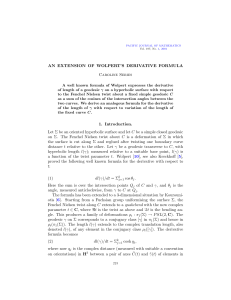
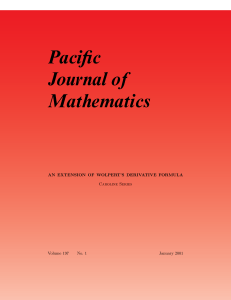
![[www.stat.berkeley.edu]](http://s1.studylibfr.com/store/data/009890385_1-17b8a124e5f43be1710b615279a22a09-300x300.png)
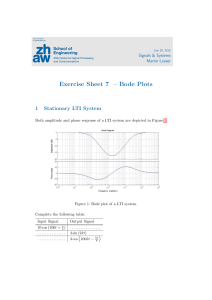
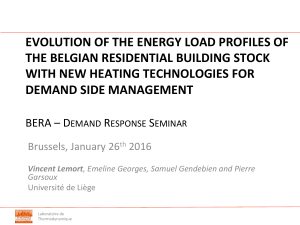
![[www.stat.berkeley.edu]](http://s1.studylibfr.com/store/data/008896044_1-f26e06a7dd14e4bea54069124e2ed434-300x300.png)
![[arxiv.org]](http://s1.studylibfr.com/store/data/008896041_1-3d425274adebc9fd99841fefe5dcf4cb-300x300.png)
